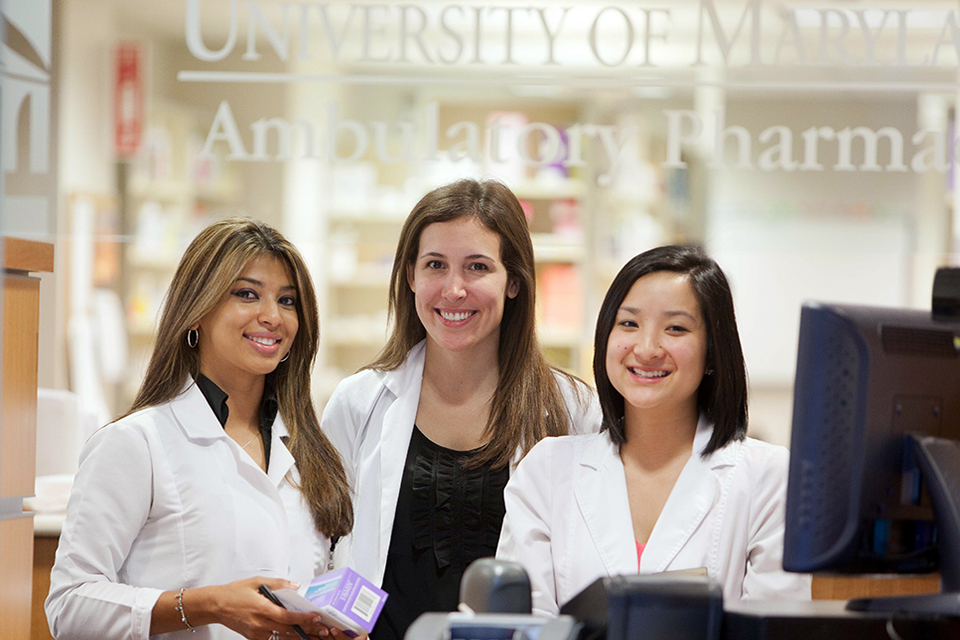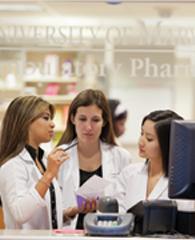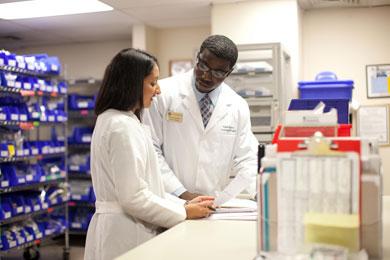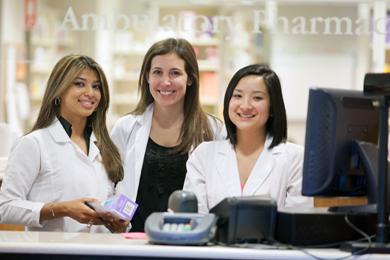Fourth-Year Students Match with Pharmacy Residency Programs Nationwide
Pharmacy Residency Match Day reveals where the School’s graduating student pharmacists will spend the next year of their training.

By Malissa Carroll
April 26, 2016
With the end of the matching period for pharmacy residency and fellowship programs across the country on April 8, thousands of fourth-year student pharmacists learned their fate when the American Society of Health-System Pharmacists (ASHP) announced its final Residency Match Day results. Thirty-four students from the University of Maryland School were matched to residency positions at institutions such as the Johns Hopkins Hospital, University of Pittsburgh Medical Center, and the Veteran’s Affairs Health Care System.
“Pharmacy residencies offer students a wonderful opportunity to continue developing their knowledge and skills in a clinical environment where they can be mentored by a more experienced pharmacist,” says Cherokee Layson-Wolf, PharmD, BCACP, FAPhA, associate professor in the Department of Pharmacy Practice and Science (PPS) and associate dean for student affairs at the School. “The number of employers that require applicants to have one or two years of advanced training beyond the completion of their Doctor of Pharmacy (PharmD) degree continues to increase. To stay competitive in the ever-changing job market, many students now actively pursue opportunities that allow them to gain this training.”
Residency training plays a critical role in helping pharmacists obtain more specialized roles within the health-system setting, and current students now understand the value that this additional training can add to their careers. In 2010, only 22 percent of graduates from the School of Pharmacy went on to pursue residency or fellowship training. In 2015, that percentage increased to 33 percent.
One fourth-year student pharmacist at the School to receive a residency match was Suzan Hua. Hua was matched with the residency program at the VA Greater Los Angeles Healthcare System, which is part of the largest post-doctorate pharmacy training program in the country and offers its trainees the opportunity to participate in direct patient care.
“I was incredibly excited to learn that I had matched to a residency program, and cannot wait to take advantage of the wide range of teaching and experiential opportunities offered through the program,” says Hua. “The knowledge and guidance that I received from professors, preceptors, and my advisor throughout my time at the School of Pharmacy were instrumental in helping me to prepare for the next step in my training.”
Muhammad Sheheryar, another fourth-year student pharmacist at the School, also received a residency match with University of Pittsburgh Medical Center (UPMC) Mercy, which offers a wide range of rotation opportunities for its first-year pharmacy residents. “To help facilitate my transition from a student pharmacist to an independent clinician, I knew that receiving residency training would be crucial to broaden my clinical knowledge and gain valuable experience in direct patient care. The faculty and alumni with whom I worked at the School were immensely supportive throughout the process, providing assistance that ranged from reviewing my curriculum vitae to conducting mock interviews. They were truly there for me every step of the way,” he adds.
The School of Pharmacy’s joint residency program with the University of Maryland Medical Center also had a successful match. Twenty residents and fellows will join or continue in the program in July to advance their knowledge and skills in a number of specialty areas, including cardiology, oncology, pediatrics, and psychiatry.
“Our residency and fellowship programs offer a wide range of innovative educational, research, and practice settings in which our trainees gain the knowledge and skills necessary to become successful practicing pharmacists and obtain competitive positions in their respective specialties,” says Kristin Watson, PharmD, BCPS-AQ Cardiology, associate professor in PPS and director of post-graduate training for the University of Maryland Residency and Fellowship Programs. “We are tremendously proud of this year’s successful match, and look forward to welcoming all of our new residents and fellows this summer.”
Jackoline Costantino, who will be joining the School of Pharmacy from Idaho State University, is one of four residents to be matched with the School’s Post-Graduate Year 1 (PGY-1) Pharmacy Practice Residency Program.
“When I visited the University of Maryland for my interview, I was astonished by how everyone welcomed me without hesitation, integrating my goals with the program’s existing strengths and recognizing the value that each member brings to the team,” says Costantino. “The matching process was filled with a kaleidoscope of emotions for me, from incredible nervousness to overwhelming excitement, and although the program at the University of Maryland truly spoke for itself, it was my experience during the interview process that led me to move forward with the match. I cannot wait to work alongside so many genuine professionals.”
Returning to the School for an additional year of specialized training in the PGY-2 Psychiatry Pharmacy Residency Program is Sarah Luttrell, PharmD ’15, who completed her first year of residency training at the Sentara Rockingham Memorial Hospital Medical Center in Harrisonburg, Va.
“Spending a year away from the School of Pharmacy helped me realize just how much I learned while I was there as a student,” says Luttrell. “The incredible faculty with whom residents and fellows can interact and the vast learning opportunities available in a range of health care settings are truly unique to the School, and I am excited to have another chance to work with the same individuals who mentored me as a student and helped to shape me into the clinician that I am today.”
More than 4,800 graduating pharmacy students and new practitioners participated in ASHP’s Resident Matching Program this year. Approximately 2,900 first-year residency positions were matched, with an additional 644 second-year residencies receiving matches as well.



